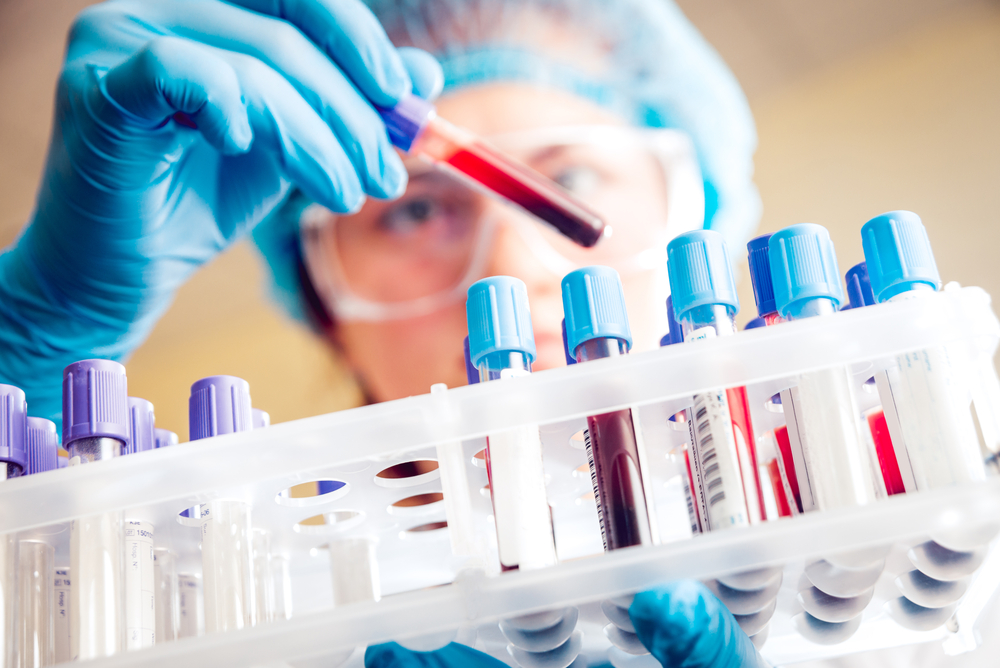During the past decade, the term “liquid biopsy” has come into common usage, and the concept is receiving significant attention in medical and non-medical literature.
Great hope has also been generated, with claims that liquid biopsy may be a game-changer in the diagnosis and treatment of cancer and other diseases. Driving this forward is the beginning of notable clinical uptake of liquid biopsy and ongoing significant large-scale investment in this new and rapidly developing technology, both commercially and academically.
This paper will describe the current status of liquid biopsy technology in the context of cancer and non-cancer diagnoses, discuss its multiple potential applications, and assess its possible impact on mortality and morbidity.
Specific opportunities and challenges it may bring to the insurance industry will also be reviewed, and RGA’s perspectives presented.
Definition of Liquid Biopsy
While definitions vary as to the precise meaning of the term “liquid biopsy,” in the current context it refers specifically to the collection of samples of non-solid biological tissues – i.e., body fluids – to test and analyze for relevant markers in specific diseases that may then guide patient management.
Currently, the term liquid biopsy applies primarily to peripheral (whole) blood collected for detection and analysis of cell-free circulating tumor DNA (ctDNA) in cancer patients,1 but it can also apply to cerebrospinal fluid (CSF), saliva, sputum, pleural effusion, urine, stool, and seminal fluid.
Cell-free DNA (cfDNA) is extracellular DNA that can come from any cell in the body. It can be found in blood and other fluids of both healthy and diseased persons, and its usefulness has been evaluated in many clinical areas other than cancer, including prenatal diagnostics, organ transplant, autoimmune disease, trauma, myocardial infarction, and sepsis.2 The tumor-derived fraction of cfDNA, referred to as circulating tumor DNA (ctDNA), and its use as a minimally invasive tumor marker in cancer patients, has received the most attention during the last several years.
Although tumor tissue biopsy is still the gold standard for cancer diagnosis and for clinical and molecular profiling of tumor DNA, it has disadvantages, including tissue inaccessibility, cost, invasiveness, risk of inadequate sampling, and some pain and risk to the patient.
Liquid biopsy has several advantages, in that samples are generally easily obtained and the sampling procedures are minimally invasive, quick, and incur minimal patient pain and risk.3 It also allows for more frequent sampling, which can provide greater insight into the behavior and progression of various tumors and their response to different therapies.
Liquid biopsy refers to the collection of samples of non-solid biological tissues – i.e., body fluids – to test and analyze for relevant markers in specific diseases.
A significant current limitation of liquid biopsy is its ability to clearly differentiate genetic variations which may be present in healthy individuals from those present in cancer patients.34 Another is that early-stage cancer tumors release very little DNA.1 Also, genetic variants or mutations need to be identified as “drivers” (i.e., actively driving the cancer pathogenesis) vs. “passenger” (i.e., present, but of no known pathological significance) in order to understand their clinical significance. At this time, it is not always possible to distinguish clinically whether a particular mutation is a driver or passenger.
Types of Liquid Biopsy Tests
Circulating cell-free DNA (cfDNA) and circulating tumor DNA (ctDNA) tests are the two main types of liquid biopsy tests. cfDNA are fragments of DNA that all cells in the body routinely shed into the circulatory system. ctDNA, a subset of cfDNA, are fragments of cfDNA shed specifically by tumor cells. These fragments contain the same genetic variants as the DNA of a primary or metastatic tumor.
It is important to remember that cfDNA found in blood or other bodily fluids can indicate several cancerous and non-cancerous pathologies, including malignant and benign neoplasms, inflammatory diseases, stroke, trauma, and sepsis.1
To date, the majority of studies on liquid biopsy in oncology focus on the extraction of ctDNA from blood samples for the detection and analysis of somatic mutations present only in the DNA of precancerous or cancerous cells. Finding mutations in ctDNA can potentially be useful in early cancer detection, as it can pinpoint the tissue from which the tumor originated, enable monitoring of the therapy response and possible development of resistance to it, and identify, via testing for ctDNA, whether minimal residual disease (MRD) exists after completion of cancer therapy.2
Detection of point (single nucleotide) mutations in a ctDNA sample, however, may have some limitations in that some tumor types have been identified that have few or no genetic mutations. Additionally, epigenetic alterations (modifications to DNA that regulate whether genes are turned off or on without changing the DNA sequence) have been shown to be more prevalent than genetic mutations in the development of cancer.5 With this in mind, in addition to being assessed for point mutations, cfDNA is also being looked at in regard to chromosomal rearrangements (inversions, translocations, insertions, and deletions), copy number aberrations (CNA), methylation, fragmentation, and gene expression.2
Tumor heterogeneity has been shown to be both a hallmark of cancer and one of the main causes of tumor resistance to cancer therapies.6 Several types of heterogeneity exist: the same type of tumor can have interpatient heterogeneity (i.e., vary from person to person); there can also be intratumoral heterogeneity, where different genetic profiles can be found within a single person’s tumor; and there can be intrametastatic heterogeneity, where various metastases from a single person can exhibit varying genetic profiles. A standard tissue biopsy from just one portion of the tumor or one metastasis may miss this molecular complexity.
The use of ctDNA to help identify intratumor heterogeneity has had mixed success up to this point. Further studies focusing on circulating tumor cells (CTCs) in addition to genomic aberrations determined via ctDNA analysis may allow for identification of the many different cellular components (e.g., DNA, RNA, proteins, and metabolites) that can influence or impact tumor heterogeneity.6
Another limitation of using ctDNA for liquid biopsy is the fact that ctDNA often comprises <1% of the total cfDNA in individuals with solid malignancies. As such, a ctDNA liquid biopsy is more likely to yield a false negative than a standard tissue biopsy, due to the variable and minute amounts of ctDNA shed by a cancer.
Two studies that looked at the use of liquid biopsy for targeted therapy in persons with advanced non-small- cell lung cancer (NSCLC) found that plasma genotyping (cfDNA) sensitivity ranged between 60% and 80% when compared to tumor genotyping (tissue biopsy). This reduced sensitivity is likely not due to any given assay but due to the fact that some cancers do not shed DNA into the bloodstream. Given this false negative rate.
with plasma genotyping (cfDNA), some patients will still require a standard tissue biopsy if their plasma testing is negative.4, 7 Still, other studies have shown that the sensitivity of ctDNA-based liquid biopsy is improved with more advanced cancers.8
Potential Clinical Uses
As with any clinical test, liquid biopsy must be evaluated by the strict criteria of analytical validity, clinical validity, and clinical utility. As this field’s technology is advancing rapidly, close attention must be paid to ensure these criteria are met for both clinical and insurance medicine purposes.
Table 1: Liquid Biopsy Test Criteria |
|---|
Analytical Validity | The ability of a test to detect and measure the presence of a cancer biomarker of interest accurately, reproducibly, and reliably. |
Clinical Validity | The ability of a test to divide one population into two or more groups on the basis of outcomes. |
Clinical
Utility | The ability of a test to demonstrate improvement in the diagnosis, treatment, management, or prevention of cancer. |
Adapted from Merker JD, et al J Clin Oncol. 2018 Mar 5:JCO2017768671.9
Keeping the above criteria in mind, along with current medical opinion, potential uses of liquid biopsy for cancer are frequently grouped into four categories:
- screening
- treatment selection and real-time monitoring of response (prognosis)
- identification of resistance mechanisms
- detection of recurrence
Multi-Cancer Early Detection (MCED)
One of the greatest areas of promise for liquid biopsy is its potential ability to revolutionize early cancer detection by analyzing available ctDNA for specific mutation profiles, fragmentation patterns, and methylation signatures.
Curative therapies are generally the most successful when cancer is diagnosed and treated at an early stage. However, current screening approaches are limited by suboptimal patient adherence, low sensitivity for early-stage disease, high false positive rates, and varied cost-effectiveness.10 Furthermore, many cancers have no screening tests available. This has driven the recent push to develop liquid biopsy-based technologies that can detect multiple cancers at early stages, known as multi-cancer early detection (MCED).
While the benefits of early detection may be tangible, screening could also identify potential tumors that may have no impact on life expectancy and could expose the individual to unnecessary further tests and possible higher morbidity risk. In addition, lead time bias, which refers to earlier detection of a cancer that does not change the survival outcome, must be controlled for in clinical studies to avoid attributing erroneous weight and value to the screening test.
In a 2021 study, Putcha, et al. outlined the challenges of and potential solutions for implementing MCED in a clinically responsible manner. They noted that more than 100 types of cancer currently exist, meaning that development of a one-size-fits- all performance requirement for MCED may pose challenges. For one, clinically acceptable test sensitivity and specificity currently varies by cancer. In addition, a cancer screening test must accurately identify a cancer at a time beneficial to the patient without creating undue harm while keeping in mind that populations are not identical. Thus, they posited: “What population should be screened with an MCED test and is there clinical utility in that population?” Potential solutions discussed to establish clinical utility include establishing test performance parameters for individual and low- prevalence cancers and inclusion of appropriate surrogate endpoints such as shift in cancer stage at diagnosis.10
In a commentary published in August 2021, Etzioni et al. stated the diagnostic performance of MCED suggests the tests may prove useful. However, proving diagnostic performance translates into meaningful clinical impact is a lengthy process. They go on to note that evaluation of both benefit and harm of a novel early detection technology is required before it can be recommended for general use. They also noted that any projection of population impact from MCED tests based on information published to date is highly uncertain and not reliable.11
While these above authors clearly recommend exercising caution when using MCED, there is certainly no lack of enthusiasm for it and research continues at a rapid pace.
Emerging MCED Data
One of the first studies to generate significant interest (both scientifically and in the news media) in MCED was published in 2018. The study utilized CancerSEEK, a test which uses combined assays for genetic alterations and protein biomarkers and has the ability to pinpoint the organ of origin of the detected cancer. The study protocol applied CancerSEEK to 1,005 patients with known non-metastatic cancers from eight different organs. The test was positive for a median of 70%, with sensitivities ranging from 69% to 98% for ovarian, liver, stomach, pancreatic, and esophageal cancer. The overall specificity was greater than 99%, and the test could localize the tumor in a median of 83% of patients. The authors concluded that their work laid the conceptual and practical foundation for a single, multi-analyte blood test for cancers of many types.12
The DETECT-A (Detecting cancers Earlier Through Elective mutation-based blood Collection and Testing) study was an exploratory, prospective, interventional trial which enrolled 10,006 women aged 65-75 without known cancer who were highly adherent to standard-of-care cancer screening. Those with positive blood results underwent diagnostic positron emission tomography-computed tomography (PET- CT) scans. During the study period, 26 cancers were detected by blood testing and 24 through standard testing – in some cases allowing treatment with intent to cure. The positive predictive value and specificity of the combined blood test and PET-CT was 28.3% and 99.6%, respectively.13
In its third study, published in 2021, The Circulating Cell-free Genome Atlas (CCGA) was used to validate a refined test version of the newly developed Galleri MCED test as a screening tool. The study cohort consisted of 2,823 people with cancer and 1,254 people without. Overall specificity of the test was 99.5%. Overall sensitivity was 51.5% but was lower at earlier stages (16.8% at stage 1) and higher at later stages (77.0% and 90.1% for stages 3 and 4, respectively). Sensitivity also varied by cancer type. Of note, cancer signals were detected in more than 50 cancer types. The correct identification of the organ of origin for the cancers was 88.7% in true positives. The authors concluded the results demonstrate the test may complement existing single-cancer screening tests and reduce cancer mortality.14
Recent MCED Developments
In June 2021, Grail launched Galleri in the U.S. It is available only by prescription and is intended for people age 50 and older. The test is not currently FDA approved, but was introduced as a Laboratory Developed Test (LDT),15 an FDA category to describe a test that is designed, manufactured, and used within a single laboratory, as a screening tool.16 The New York State Department of Health approved the test in September 2021.17
On September 13, 2021 the U.K.’s National Health Service (NHS) launched the world’s largest trial of an MCED test. It is piloting Galleri with 140,000 volunteers, ages 50 to 77, in eight areas of England. The hope is that test results could help the NHS formulate a plan to detect 75% of cancers at early stages. Initial results are expected in 2023, and further rollout is expected to one million people during 2024 and 2025, if successful.18
Despite some criticism, rapid technological advancements in MCED and subsequent introduction into clinical medicine are occurring. The impact is yet unknown at the population level, but expectations are high that significant benefit will begin to be measurable and observable in the next several years.
FDA-Approved Tests, Uses
Circulating tumor DNA (ctDNA) test
In the past few years, more liquid biopsy tests have gained acceptance and approval for use. The most recognized are the ctDNA tests, used to guide therapy selection for people with cancer and monitor tumor behavior, response to treatment, and disease recurrence.19, 20
In August 2020, the U.S. Food and Drug Administration (FDA) approved Guardant360 CDx and FoundationOne Liquid CDx, two liquid biopsy blood tests that use next-generation sequencing (NGS) to target multiple genes in advanced cancer patients.19 Both tests are used for general tumor profiling and for identifying genetic features that make solid tumors more susceptible to treatment with certain immunotherapies.
Guardant360 CDx is able to detect EGFR mutations in the cfDNA of some NSCLC patients. It also provides key information regarding the presence or absence of a change in the gene and identifies patients who may benefit from drugs shown to be effective against these mutations. As an example, Guardant360 CDx is used as a companion diagnostic test for osimertinib, a lung cancer therapy targeting the EGFR mutation.19, 21
FoundationOne® Liquid CDx is also used for general tumor profiling. It can identify changes in more than 300 genes, and can also serve as a companion diagnostic for three lung cancer therapies (osimertinib, gefitinib, and erlotinib) and for a prostate cancer therapy (rucaparib).19, 21
While a ctDNA-based liquid biopsy can provide key information about the safe and effective use of a corresponding drug and potentially improve disease-specific mortality, it does have limitations. Sensitivity ranges from 60% to 80%, and the tests have a higher chance of producing false negatives compared with traditional biopsies, owing to the small and variable amounts of ctDNA circulating.21 Furthermore, even though both tests represent a major advance in cancer diagnostics, their use poses several challenges and considerations regarding the potential for false positive results, and further action when results involve cancer-causing mutations in genes with no targeted therapeutics.22
Tests detecting ctDNA are currently used in practice but only in individuals with a known cancer diagnosis. Scientists are, however, working on promising projects. The NHS trial of Galleri to use ctDNA for early cancer detection will evaluate whether ctDNA can be used as a screening tool, enabling earlier cancer detection with consequent improvements in patient outcomes.23
Circulating tumor cell (CTC) test
Even though many CTC tests are commercially available, the FDA has only approved CELLSEARCH®, a test which measures CTCs and offers prognostic evaluation for patients with advanced breast, colorectal, and prostate cancers. By counting the number of CTCs detected at different points of time (e.g., before and after initiating therapy), physicians can assess tumor response and both progression-free and overall survival.
Researchers have also been moving towards analyzing detected CTC content (e.g., miRNAs) as possible cancer biomarkers. These tests show remarkable potential, especially in prognostic evaluation in urological malignancies.
Commercialization of Liquid Biopsy
The liquid biopsy market is one of the fastest evolving markets worldwide, estimated to be worth more than US$1 billion and predicted to more than quadruple by 2025.24 Currently, North America has the largest share, but Asia-Pacific is expected to grow fastest from now through 2031. Driving growth are rising global cancer cases, increased healthcare funding by governments, and higher patient preference for non-invasive diagnosis and monitoring.25
The liquid biopsy market is one of the fastest evolving markets worldwide, estimated to be worth more than US$1 billion and predicted to more than quadruple by 2025.24
More than 50 companies to date have developed liquid biopsy tests, including Exact Sciences, Foundation Medicine, Grail, Guardant Health, and Illumina.24 Guardant Health first launched Guardant360, which tests for 73 cancer-related genes, in 2014, and after receiving FDA approval in 2021, the name changed to Guardant360® CDx. Foundation Medicine, a wholly owned subsidiary of Roche since 2018, recently received FDA approval for FoundationOne® Liquid CDx. The test analyzes more than 300 genes and genomic signatures to help physicians make informed treatment decisions for solid tumor cancers. Grail, a U.S.-based company originally formed by Illumina, recently launched its own trial of its Galleri liquid biopsy cancer test in conjunction with the National Health Service in the U.K., with results expected by 2023.26
Non-Cancer Applications: Infectious Diseases
Invading microbes either die naturally or are killed by antibiotics and/or the body’s immune response. Upon death, microbial genetic material and nucleic acids are released into the bloodstream or other bodily fluids. Sequencing methods are then used to identify the fragmented microbial cfDNA (mcfDNA).
mcfDNA has shown potential value as a marker in the detection of infectious diseases such as bloodstream infections, tuberculosis (TB), fungal and parasitic infections, endocarditis, pneumonia, urinary tract infections, and infections following organ transplants. Infectious diseases are currently diagnosed using microbiological culture- based methods, but an exact pathogenic diagnosis is often unclear, and turnaround times from sampling to results are usually at least 48 hours. The ability to identify pathogens more quickly using non-invasive screening methods may provide significant benefit to patient outcomes.27
Clinical diagnosis of TB is difficult due to its long latency period and nonspecific symptoms. Researchers have developed several mcfDNA PCR-based tests that use blood and urine specimens to diagnose infections. mcfDNA sequencing can identify early infections in people who have undergone transplants, a significant cause of morbidity and mortality in immunosuppressed patients. The mcfDNA plasma test, developed by the liquid biopsy specialist company Karius, is able to detect more than 1,000 organisms in the bloodstream that are responsible for causing infection. It has shown sensitivity and specificity of 92.9% and 62.7%, respectively. The test is also able to detect probable cause of sepsis in nearly half of patients (48.6%), compared to 18.1% using blood culture and 37.9% using microbiology tests. It also provides better results in detecting pathogens from individuals who had received antimicrobial therapy within two weeks preceding presentation compared to blood culture (47.9% versus 19.6%).27
mcfDNA analysis is extremely beneficial for monitoring changes in the human microbiome. This technology is already providing valuable diagnostic information, but further work will be needed to establish quantitative reference parameters in order to provide a clearer interpretation of results.
There are, however, issues with using liquid biopsy for clinical diagnosis of infectious diseases:
- cfDNA concentrations vary considerably from person to person, within a range of 0-100 nanograms per 1,000 microliters (ng/µl) of plasma. The amount of cfDNA extracted from 300µl of plasma is often no more than 1 ng/µl, so maximizing recovery of cfDNA is critical. Human cfDNA accounts for most of it, and mcfDNA for only tiny fractions: 0.08% to 4.85% comes from bacteria; 0% to 0.01% from fungi; and 0% to 0.16% from viruses/phages.27
- Other issues include a lack of quantitative results differentiating infection from potential contaminants, and differences between practice and protocols with liquid biopsy methodology.24
- Elevated biomarker levels may be indicative of other pathological conditions, including infection, sepsis, and autoimmune diseases. Sensitivity has been shown to be between 70% and 92.9% and specificity between 62.7% and 88.2% for mcfDNA tests. In a sequencing analysis of 78 plasma samples taken from ICU patients, the positive predictive value for bacteremia was 53.3% and the negative predictive value was 95.2%.27
- cfDNA sequencing tests lack the ability to detect RNA virus pathogens such as human immunodeficiency virus (HIV), Zika, hepatitis C, respiratory syncytial virus (RSV), enteroviruses, and norovirus.27
- mcfDNA sequencing is currently very expensive: sequencers cost approximately US$500,000, and there are additional costs of up to US$100,000 for the reagents involved in analysis and validation. As a result, a single liquid biopsy test may often cost more than US$2,000.27
Non-Cancer Applications: Noninvasive Prenatal Testing
Noninvasive prenatal testing (NIPT), which analyzes fetal cfDNA in the maternal bloodstream, is being more frequently used since its introduction in 2011. It is used to screen for fetal chromosomal abnormalities and to detect other fetal and pregnancy- associated conditions such as preeclampsia, fetal growth restriction, congenital heart diseases, and gestational diabetes. Fetal DNA shed into the mother’s bloodstream can also be sequenced to test for common chromosomal abnormalities such as trisomy 21 (Down syndrome), trisomy 18 (Edwards syndrome), trisomy 13 (Patau syndrome), and monosomy X (Turner syndrome). A recent meta-analysis of the performance of cfDNA testing for chromosomal abnormalities showed a detection rate and false positive rate of 99.7% and 0.04% for trisomy 21, 97.9% and 0.04% for trisomy 18, 99% and 0.04% for trisomy 13, and 95.8% and 0.14% for monosomy X.28
Extracellular Vesicles
Extracellular vesicles (EVs) are rudimentary cells, mostly isolated from blood plasma and serum. These are considered a promising liquid biopsy tool for noninvasive diagnosis of certain non-cancer diseases, as they contain microribonucleic acids (miRNAs), messenger RNAs (mRNAs), DNA, proteins, and lipids. EVs derived from blood samples have shown the potential to diagnosis conditions such as Alzheimer’s disease, amyotrophic lateral sclerosis, Parkinson’s disease, and Huntington’s disease. Urinary EVs may also be useful indicators of Alzheimer’s disease, with patients showing higher levels of amyloid beta 1-42 and anti-tau (phospho-S396) than do controls. Saliva liquid biopsy testing may help diagnose conditions such as oral lichen planus, periodontitis, and Sjogren’s syndrome, as elevated protein levels in saliva EV are involved in wound repair.29
Insurance Implications
Potential clinical applications of liquid biopsy are incredibly exciting. Given their multiple potential uses, they will surely impact many aspects of insurance medicine and products. Despite technical challenges and the need for further clinical validation, there is great hope for breakthrough developments in liquid biopsy technology and precision medicine, leading to overall reduction of cancer-related mortality and morbidity. Thus, while currently presenting some challenges to the insurance industry, liquid biopsy technology also represents great opportunity.
Life Insurance
With real-time monitoring and targeted therapies able to be guided by liquid biopsy, even previously fatal cancers, such as advanced-stage lung cancers and melanomas, can now be controlled for extended periods of time with an array of relatively well-tolerated therapies that, to date, exhibit very modest long- term risks. Nonetheless, longer-term survival with these diseases will need to be demonstrated before there will be a significant impact on the underwriting of affected individuals and on mortality outcomes for insured lives. Eventually, post-issue or in-force wellness management programs may be considered once improved outcomes are proven.
Critical illness (CI)/Cancer Cover
If liquid biopsy is eventually used as a viable pan-cancer screening test, potential over-diagnosis rises and an increase in cancer incidence rates may result. This could have a significant impact on in-force products with guaranteed pricing and could also change how new products are priced. Added to this could be the risk of anti-selection at underwriting, leading to more applicants with positive screening tests selectively purchasing critical illness or cancer cover.
As more than half of CI claims are due to cancer, any advances in cancer diagnosis capabilities may significantly impact this benefit. Currently, well-designed CI products are often based upon traditional histopathological and topographical staging, and their cancer definitions require histopathology or tissue biopsy reports. The impact of liquid biopsy on standard, staged, and severity-based CI products remains to be determined. However, if it challenges the classic taxonomy of tumor staging and progression, unfavorable claims experience may result.
There has been speculation about whether standard tissue biopsy may someday be replaced by liquid biopsy. Experts agree that despite the various advantages of liquid biopsy, ctDNA testing is not intended to replace traditional tumor biopsy testing entirely, but it will have its own role.
A recent study of NSCLC patients suggested that ctDNA testing may be a viable choice when there is insufficient tissue for genomic testing or if a repeat biopsy of the tumor tissue is not possible.30 Having said that, these cases would also likely have other companion investigations, such as imaging, to stage the cancer, and the final diagnosis would not be based on liquid biopsy in isolation. In addition, clinical treatment with radiotherapy, chemotherapy, or immunotherapy would significantly support the cancer diagnosis and hence may be covered per the level of severity intent of the CI policy.
Terminal Illness Cover
If overall survival and progression-free survival rates for those with cancer improve, terminal illness cover may lose some of its attractiveness given that its terms of death within one (or otherwise specified) year may no longer be fulfilled. Assessing life expectancy of those with advanced cancer is difficult enough, thus the introduction of liquid biopsy and precision treatment will introduce more variability and potentially make that process even more complicated.
Health and Medical Reimbursement Cover
As more biotechnology companies develop liquid biopsy tests, the cost of performing such tests could drop over time to the point that they might be more cost-effective than standard tissue biopsies. The average cost of a lung cancer tissue biopsy can be as high as $14,63431 and can be much higher in the event of complications requiring hospitalization. The liquid biopsy test GeneStrat®, for example, is significantly less expensive than standard tissue-based biopsies, with an average savings of approximately $3,300 and $7,400 for CT-guided and navigational bronchoscopies, respectively, in patients with confirmed NSCLC.32
Overall, public and private coverage of liquid biopsy tests has grown rapidly in recent years, but some significant limitations remain.
A study by Douglas, et al. in the Journal of the National Comprehensive Cancer Care Network reviewed trends in insurance coverage for liquid biopsy from 2015 to 2019. The researchers found that no provider covered liquid biopsy in 2015 and 2016, but by mid-July 2019, coverage had risen to 38%.33 Policies also increased coverage scope from 2017 to 2019, going from one cancer type (NSCLC) to 12, and increasing from a single gene (EGFR) to 73 genes. The study also found 45 payers with specific policies against coverage. In addition, the U.S. Medicare program was found to be evolving toward use of liquid biopsy across all cancer types, signifying a major shift.
Insurance Definitions and Claims Adjudication
Historically, medical advances have benefited overall population health and wellness, leading to improved morbidity and mortality outcomes. It is likely that liquid biopsy, in some form, may be no different. However, certain medical advances, such as the ever- changing definition of myocardial infarction, have impacted insurers unfavorably on product lines such as CI.
Keeping this in mind, insurers should re-evaluate policy definitions for all products and, in the case of liquid biopsy, strongly consider modifying CI policy cancer definitions to address liquid biopsy’s potential impact on incidence and claims rates. To that end, consideration may be given to the addition of a well-crafted liquid biopsy exclusion. However, it or any other cancer definition modification should be designed to ensure consumer fairness and transparency, to allow for changes in clinical standards, and enable claims to be adjudicated with an objective perspective. In doing so, decisions can remain reasonably consistent with clinical standards and the original intent of the product design.
Summary
The rapid development of liquid biopsy technology, along with its potential for multiple clinical applications, including new cancer screening tests, has garnered significant attention in both the medical and non-medical literature. This area of research is also receiving large sums from the investment sector with high expectations for profitable returns. Historically, medical advances which have improved mortality and morbidity have also, either directly or indirectly, benefited the insurance industry. Thus, despite the challenges and concerns regarding the emerging field of liquid biopsies, insurers should seek ways to embrace and find opportunity with these promising developments.







